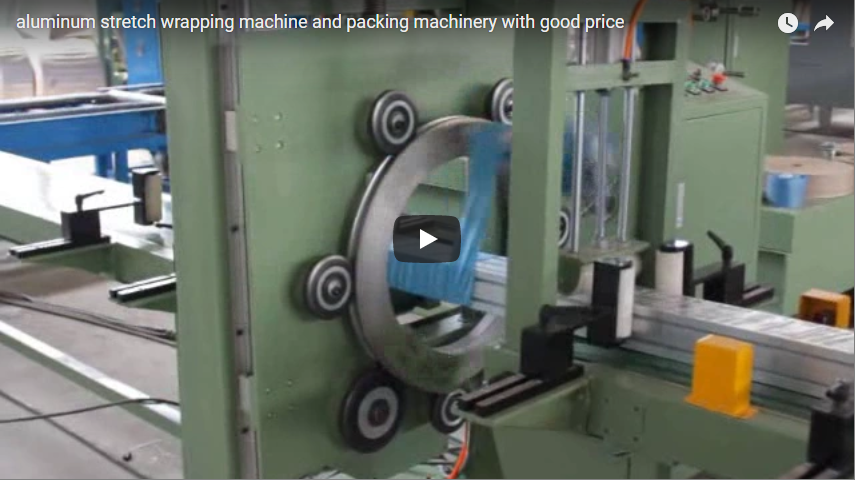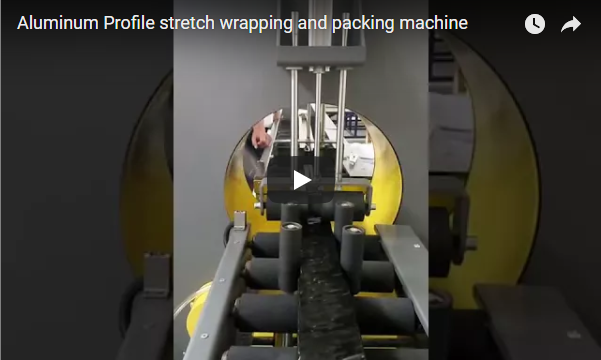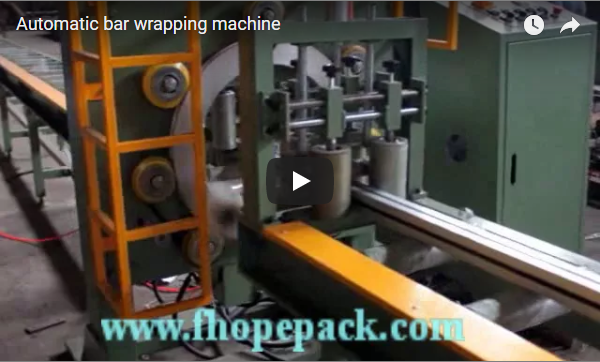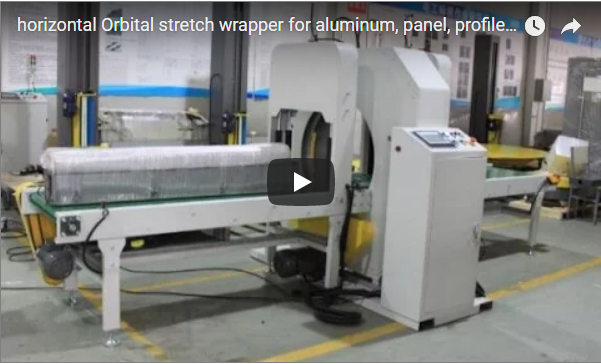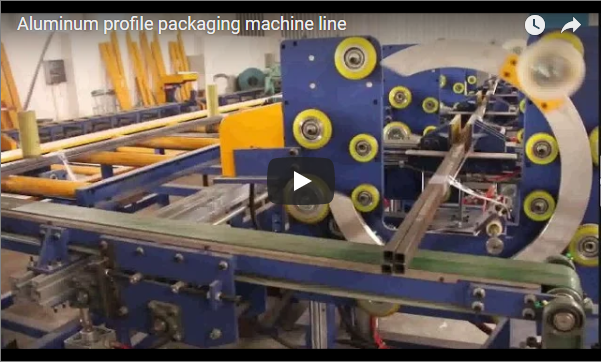Optimizing Aluminum Packaging: A Technical Overview of Automatic Orbital Stretch Wrappers with Six-Sided Coverage
Video demonstration of an automatic orbital stretch wrapper processing aluminum profiles.
Packaging long or awkwardly shaped aluminum products, such as extrusions, profiles, and pipes, presents unique challenges. These materials often require protection not just on the top and bottom, but completely around their perimeter to guard against scratches, dust, moisture, and handling damage during transit and storage. Automatic orbital stretch wrappers offer a specialized solution, designed specifically to provide comprehensive, six-sided coverage using stretch film. This article provides a technical overview of how these machines operate, their key features, and operational considerations relevant to the packaging industry.
1. Understanding the Technology: How Orbital Stretch Wrappers Work
Unlike traditional turntable stretch wrappers where the load rotates on a platform, orbital stretch wrappers keep the product stationary or move it linearly along a conveyor. The core component is a large vertical rotating ring. This ring carries a dispenser loaded with stretch film. As the aluminum product passes horizontally through the central opening (the "eye") of the ring, the ring rotates around the product, dispensing and applying the stretch film in an overlapping spiral pattern. This orbital motion is key to achieving full six-sided coverage along the entire length of the product.
2. Key Features and Technical Specifications
While specific machine configurations vary, typical technical features of automatic orbital stretch wrappers for aluminum include:
- Wrapping Ring:
- Diameter: Sized to accommodate the maximum cross-section of the aluminum products (e.g., 400mm to 2000mm+).
- Rotation Speed: Variable, often adjustable via the control panel (e.g., up to 80 RPM or more, depending on ring size and application).
- Conveyor System:
- Type: Typically powered roller or belt conveyors suited for long, rigid items.
- Speed: Often synchronized with the wrapping process, adjustable for different throughput requirements.
- Infeed/Outfeed Sections: Lengths designed to handle the specific product lengths being processed.
- Film Delivery System:
- Pre-stretch: Powered pre-stretch mechanisms (e.g., 150-300%) are common to maximize film yield and ensure tight wrapping.
- Film Compatibility: Designed for standard machine stretch film rolls (e.g., 500mm width, various gauges/micron thicknesses).
- Film Cut & Clamp: Automated systems to cut the film tail after wrapping and clamp it for the start of the next cycle.
- Control System:
- Controller: PLC (Programmable Logic Controller) for reliable automation.
- Interface: HMI (Human-Machine Interface), often a touchscreen, for setting parameters (wrap counts, overlap percentage, tension levels, conveyor speed) and storing product recipes.
- Throughput: Dependent on product length, ring speed, and conveyor speed, but systems can often process several units per minute.
- Product Handling Capabilities:
- Dimensions: Defined minimum and maximum product cross-section (width x height) and length.
- Safety Systems:
- Guarding: Physical barriers or light curtains around moving parts.
- Emergency Stops: Readily accessible E-stop buttons.
- Interlocks: Safety switches on access doors.
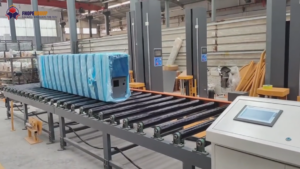
board and cabinet horizontal wrapping machine testing video with two layers packing material 3. The Advantage of Six-Sided Wrapping
For aluminum products, particularly those with sensitive surfaces (anodized, powder-coated, polished) or specific structural integrity requirements, six-sided wrapping offers significant benefits:
- Complete Surface Protection: Shields all faces from abrasion, scratches, dirt, dust, and moisture.
- Load Stabilization: Effectively bundles multiple profiles or secures complex shapes, preventing shifting during handling.
- Tamper Evidence: A fully wrapped product clearly shows if the packaging has been compromised.
- Improved Handling and Storage: Creates a more stable, unitized load that is easier and safer to move with forklifts or store in racking systems.
4. Operational Considerations and Experience Sharing
From an operational standpoint, users often report the following experiences:
- Ease of Use: Modern HMIs allow operators to easily select pre-programmed recipes for different product types or adjust wrapping parameters intuitively.
- Film Management: Changing film rolls is a routine task. Ensuring the film cutting and clamping mechanism functions correctly is crucial for minimizing downtime. Film breaks, while less common with good quality film and proper tension settings, require operator intervention.
- Maintenance: Routine maintenance typically involves inspecting and cleaning rollers and belts, checking film carriage components, lubricating bearings and chains as per the manufacturer's schedule, and verifying the sharpness and alignment of the film cutting blade.
- Integration: These wrappers are often integrated into automated production or finishing lines. Proper communication signals (e.g., product presence detection, readiness signals) between the wrapper and upstream/downstream equipment are essential for smooth operation.
5. Applications in the Aluminum Industry
Automatic orbital stretch wrappers are widely employed for packaging various aluminum forms, including:
- Extruded profiles (e.g., for windows, doors, curtain walls, automotive trim, structural components)
- Pipes and tubes
- Bars and rods
- Finished aluminum components requiring high levels of surface protection
The ability to adjust film tension and overlap ensures that both delicate, lightweight profiles and heavier structural elements are wrapped effectively and securely.

Conclusion
Automatic orbital stretch wrappers provide an efficient and effective method for achieving complete six-sided protection for aluminum products. By understanding their operating principles, key technical features, and operational nuances, businesses can leverage this technology to enhance product protection, improve packaging line automation, and ensure their aluminum goods arrive at their destination in optimal condition. The programmability and adaptability of these machines make them suitable for a wide range of aluminum shapes and sizes encountered in architectural, industrial, and manufacturing sectors.
https://www.fhopepack.com/Aluminum/
info@fhopepack.com

